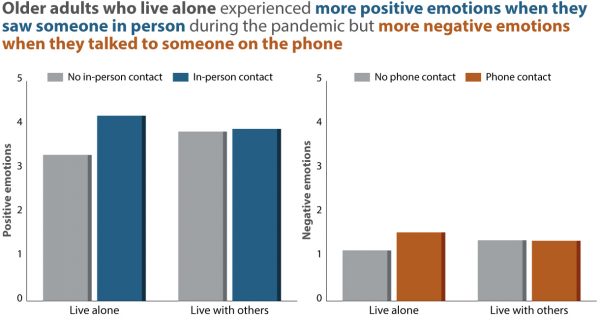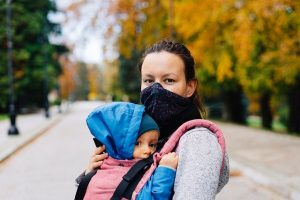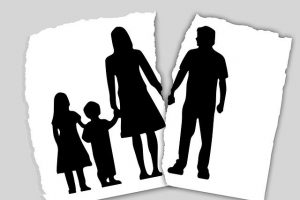
Parenthood is a beautiful yet immensely stressful endeavor. What is less understood is how LGBTQ (lesbian, gay, bisexual, transgender, or queer) individuals fare in their experience of parenthood, and how this endeavor affects their health and well-being (note that these individuals are referred to as “queer”—an umbrella term for sexual and gender minorities in the following text for simplicity). To celebrate pride month, we share the findings of our research on the health and well-being of queer parents.
Generally speaking, parents tend to experience more stress and report worse health than those without children in part due to the emotional, physical, and financial stress of childrearing. In particular, compared to heterosexual parents, queer parents may experience more stress deriving from higher levels of discrimination experienced in daily interaction and social institutions such as adoption agencies, school systems, and health services. Lesser known is how queer parents fare in comparison to their childless peers. Additionally, queer parents who are people of color (POC) may experience even more stress resulting from racial discrimination than their white peers, adding to their plight as parents and queer people. However, the health and well-being of racial minority queer parents has received relatively little attention in both academic research and public media.
Our study, recently published in the Journal of Marriage and Family, compared two main health outcomes — mental well-being and smoking— between parents and non-parents for a group of gay and lesbian adults. Based on respondents’ self-reported information—whether their gender identity (i.e., male, female, transgender) corresponds with their birth sex (i.e., individuals whose assigned birth sex is the same as their gender identity are hereafter referred to as “cisgender” adults), we analyzed three subgroups: cisgender gay men, cisgender lesbian women, and transgender gay/lesbian adults. We used data from the 2010 Social Justice and Sexuality Project, a survey of racially diverse sexual and gender minority adults residing in all 50 US states and Puerto Rico.
Overall, our results suggest that parents and non-parents have different health outcomes. This finding further depends on the gender identity of these gay and lesbian adults. In the analysis on current smoking status, we found that among cisgender gay men, fathers were more likely to be current smokers than non-parents. We identified a few potential explanations from prior work. First and foremost, cisgender gay fathers experience substantial stress related to their gay father status. In U.S society, parenthood is still considered to be based on a heteronormative union between a cisgender man and a cisgender woman. In this cisgender heterosexual union, women continue to undertake the majority of child care, even though men have picked up more childrearing work over the past few decades. Furthermore, cisgender gay fathers may be more visibly out than cisgender gay non-fathers. Taken together, the juxtaposition of sexual minority identity and fatherhood status challenges people’s conventional understanding of families and parents and thus can exposes gay fathers to more discrimination and stress in daily life. For instance, some cisgender gay fathers may experience more stress due to the limited legal protections that allow them to negotiate non-residential co-parental arrangements and interact with their children. As for why cisgender gay fathers smoked more but did not report worse mental well-being than cisgender gay non-parents or cisgender lesbian adults, it is likely related to the fact that men are more likely to self-regulate stress through externalized behaviors such cigarette smoking compared to women.
In the analysis on mental well-being, which was based on four questions assessing how people felt happy and hopeful, we found that among gay and lesbian transgender people, parents appear to have better mental health than those without children. This finding echoes prior work on the resilience of transgender parent families—for example, transgender parents are able to adopt more fluid gender norms and facilitate more support for family members. In addition, prior research has found that in general, transgender adults tend to have worse health than cisgender adults. In our sample, transgender gay/lesbian adults also reported worse mental health than cisgender gay and lesbian adults. When we compared all six subgroups in our sample (i.e., parents and non-parents from three gender identity groups), we found that transgender gay/lesbian nonparents also had worse mental well-being than their cisgender childless peers. In sum, this finding also suggests that transgender gay/lesbian non-parents may experience excessive stress that makes them particularly vulnerable to deteriorating mental health.
Our research sample is mostly composed of racial and/or ethnic minorities. Thus, our results may reflect the unique experience of gay/lesbian parents of color as a result of their multiple marginalized identities. A focus on queer people of color is particularly important as LGBTQ populations are more racially diverse than the general population. The mass media industry also seems to have taken note of this demographic change. For example, ‘Sesame Street’ featured two seemingly inter-racial gay fathers (a Latino father and a white father) along with their daughter Mia, played by a Latina girl in an episode aired recently for Pride Month—the first time that this iconic Children’s television show has included a queer parent family of color in its 51-year history.
To celebrate pride month, we share our paper, which highlights the unique experiences of LGBTQ parents—how their sexual and gender statuses shape their health and well-being relative to their LGBTQ childless peers. We hope that our research can help policy makers recognize the challenges queer families face and make deliberate efforts to support these families and their rich communities. For researchers, we encourage you to continue to further examine queer parenthood. For media producers who are important curators of content for future generations, we are looking forward to more representations of queer parent families that can help build a more inclusive society for us all.
Zhe (Meredith) Zhang is a postdoctoral research fellow in the Department of Sociology at Rice University. Follow her @zhezhang. Kiana Wilkins is a doctoral student in the department of Sociology at Rice University. Follow her @kianawilkins.








